12 lead generation ideas that really get you leads
Let’s face it: without a reliable source of new leads, your business has a tough challenge ahead. Companies are constantly looking for leads, and unfortunately they are still missing a lot of opportunities to do so online.
In case you haven’t quite caught up yet: people are looking online for information, and for companies that can do something for them. That means all industries, also B2B.
If you are a CEO or a marketing manager, you are probably used to setting concrete goals. For marketers, ‘generate x leads’ is a common goal.

So where do you get those leads? Trade fairs and networking events are still options, but the world has has changed drastically and we all had to find ways to get the job done remotely.
And what about GDPR? Just emailing people out of the blue without their consent is not allowed anymore (spoiler alert: it never really was). And honestly: has that ever really worked for anyone?
The point is that you need customers for your business, and for that you need leads.
Are you struggling to generate leads online? Then keep on reading, and discover 12 effective ways to generate leads for your business, starting today.
1 - Email series or courses
A lead magnet that worked really well for us in the past, is an email course. We used it to teach our target audience something very specific. This way you deliver direct value for free, and people really like to subscribe to something like that.
Think of a topic you can write several emails about. Make sure your topic is directly linked to your activities, and that you offer value to your audience in each e-mail. If you don’t, your emails are useless and people will stop reading them pretty soon. Also think about the frequency of the email series you want to send.
Next, write out each email in your series. So: first your confirmation email, then your whole series of emails, and maybe even a ‘thank you’ e-mail afterwards. You also need a landing page where people can subscribe.
An example: we did a summer school. In a series of 10 emails, we shared a tip every day that people could immediately apply in their companies. There was always a tool, an interesting link with extra information or something similar. The beauty of this is that you can use a lot of content that you already have today, so you don’t need to put a lot of effort in creating new content.
2 - Facebook lead ads
You may have thought about advertising on Facebook before. Lead ads certainly make generating leads on Facebook easier. With Lead Ads, you no longer pay for reach, you pay purely for generating effective leads. This happens through a lead form on Facebook itself, so your target audience does not even have to leave Facebook anymore. You also do not have to build a landing page. And Facebook users do not even have to fill out the form: Facebook does that for them. All they have to do is confirm.
So how do you get started?
First of all, choose something valuable that you want to promote, like a calculator, a white paper or a case study. Make your offer as valuable and accessible as possible, so that your cost per lead remains low. Next, use a clear and simple step-by-step plan to set up your Lead Ad.
Would you like some inspiration? Just Google for examples of successful lead ads. You will get lots of details about what is good about each example. Then, just apply what you think will work well for your business.
3 - Qualify leads with a chatbot
Many companies are still afraid of chatbots. Afraid that it is very technical and difficult to implement. 58% of companies don’t implement chatbots because they don’t know how or find it too difficult (source: Tidio).
Fortunately, it is not that difficult at all. You really don’t have to be a programmer to set up a simple chatbot.
We do recommend that you first determine what the chatbot should do for you. You can use them for various purposes, from a simple subscription to your newsletter, to online Q&A via the chat. And you can also generate leads with chatbots.
Why should you use chatbots?
- visitors are more inclined to answer questions through a chatbot than in a form
- with chatbots you engage in a conversation, resulting in a more human and stronger contact
- With chatbots you can generate more leads than with the typical forms
4 - Offer useful templates
How many times have you been asked to create something in Excel or PowerPoint? I bet you didn’t feel like starting from scratch, so you probably went looking for a template online, right?
There are certainly lots of templates in your industry that you can come up with for your target audience. Think of something that really helps them. If you have done your buyer persona research properly, you will know which templates will appeal to them.
As a marketer, you want to know how much your content marketing efforts will cost, for example. You need a number of tools, and it also takes some time to create really good content. We help marketers with that by providing the simple and immediately usable content budget template below.
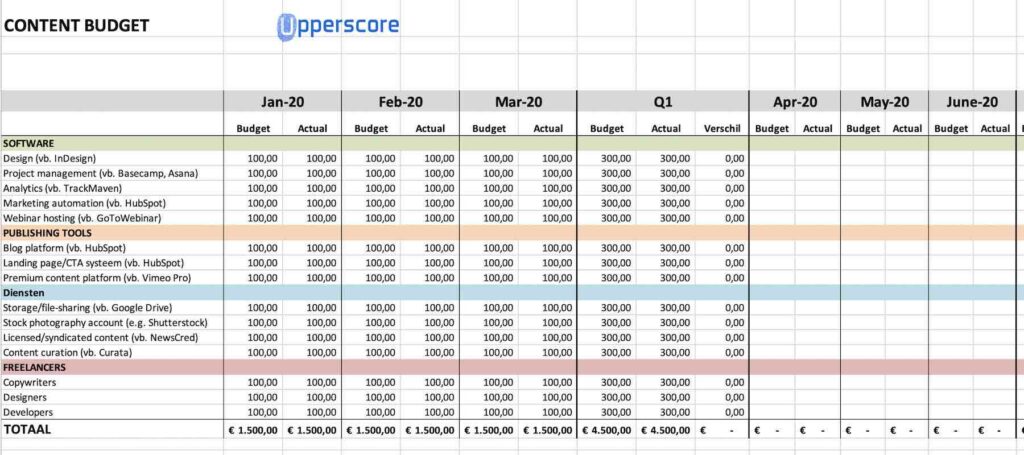
5 - An interactive quiz
A quiz can also be an effective way to generate leads, both for B2C and B2B companies. If your quiz is relevant to your target audience AND your company, you can really get warm leads. Make sure you create a quiz that attracts people, don’t bore them.
For example, many people like to test what type of person they are, or what type of company they work for. You can use this to create a fun and relevant quiz. Just like any other piece of content, the aim should be to give your visitors some value.
When defining your quiz, think of useful questions for your quiz, and don’t make too many. After all, you’re not conducting scientific research here. You also need to decide at what point in the quiz you want to ask for personal data like an email address. Do you want to do that at the beginning, or rather at the end? And do you want to show the score immediately at the end of the quiz, or do you prefer to mail them the answer?
If you want to start with an online quiz, you will need a tool for this. SurveyMonkey, Qzzr and Brandquiz are some of the most common tools you can use. When choosing a tool, don’t just look at the price, but also at the features you get and the integration possibilities with tools you already use.
6 - Surveys
Surveys are similar to quizzes, but they are more serious. Many companies conduct regular surveys, for example to get data on customer satisfaction. In that case, you question people you already know, like existing customers or suppliers. Few companies use this to generate leads, even though it is a very effective lead generation tool. As a marketing professional, you get more information about the topic of your survey, you get to know your buyer persona better, and you also receive personal data from your target audience.
For instance, you can think of a survey about evolutions in your sector, about new technologies, the behavior of your target group, etc. Ask people for their opinion but make sure your survey is not too long. And to reach people effectively, you also need a distribution strategy. Think of social media, Facebook ads, your own website or those of partners.
You can run surveys with tools like SurveyMonkey, Typeform or simply Google Forms.
7 - Write a trend report
If you regularly conduct surveys, you could also pour that data into a trend report. This is a kind of e-book that you don’t see often. The companies that have been writing these reports for some time often have a large target audience that is eager to receive that year’s trend report.
In any case, those surveys will help you gather data, that you can turn into insightful reports that will really help your target audience. These reports don’t need to be 100 pages long to be interesting or useful.
So how do you go about this? Start by going through all your data and organise it. Extract the insights you want to share with your target audience. Don’t forget to add demographic data or general industry statistics . And while you’re at it, make sure it looks visually appealing. Make graphs, play with colors, use icons and leave enough white space.
You don’t need expensive tools for this, by the way: Canva is already a great tool to create beautiful things, and it’s free.
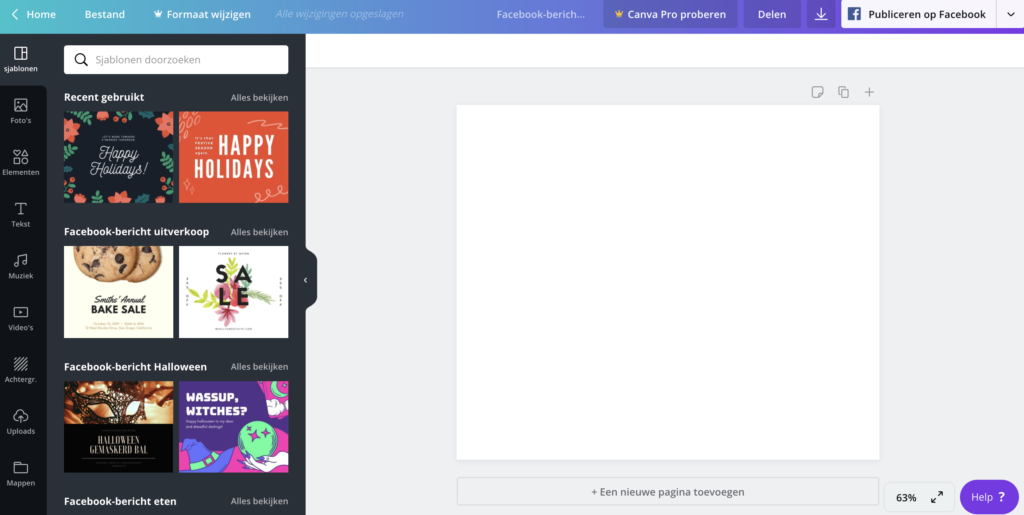
8 - Free trials and demos
Letting people try your product or service for free is also a great way to generate leads. People just love free trials… well, free anything really.
If your product or service is suitable for giving a demo or offering a free trial, that can be a powerful way to generate leads. Think about it: we all like to test drive a car, or try on those new jeans before paying at the cash register.
Rydoo, a Belgian software company, offers demos. Potential customers can get a taste of what the software can do, and they can ask all their questions during the demo.
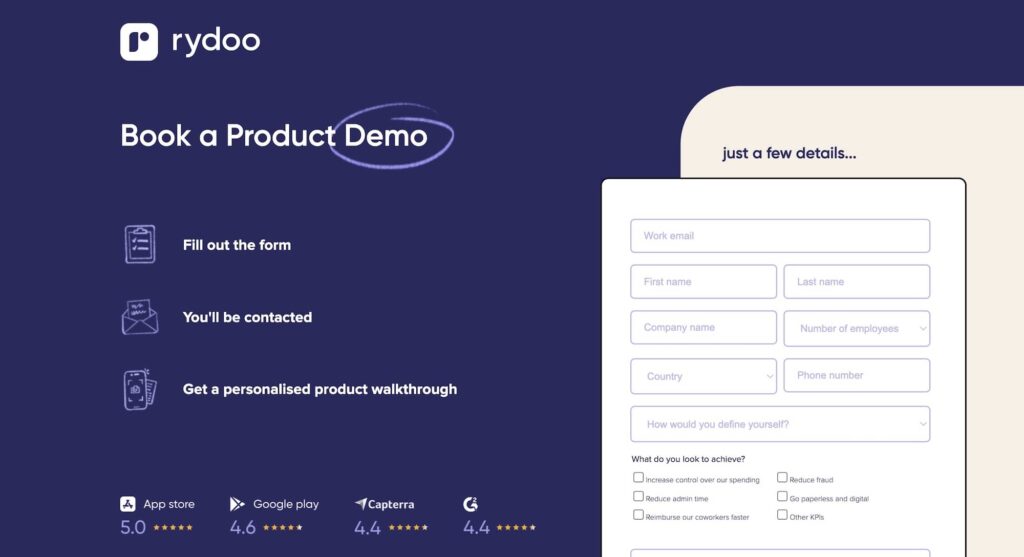
Hiveage is a digital tool that allows you to keep track of timesheets and easily create and send invoices. They offer a free 2-week trial. During this trial, you can try out the tool yourself and experience its ease of use.
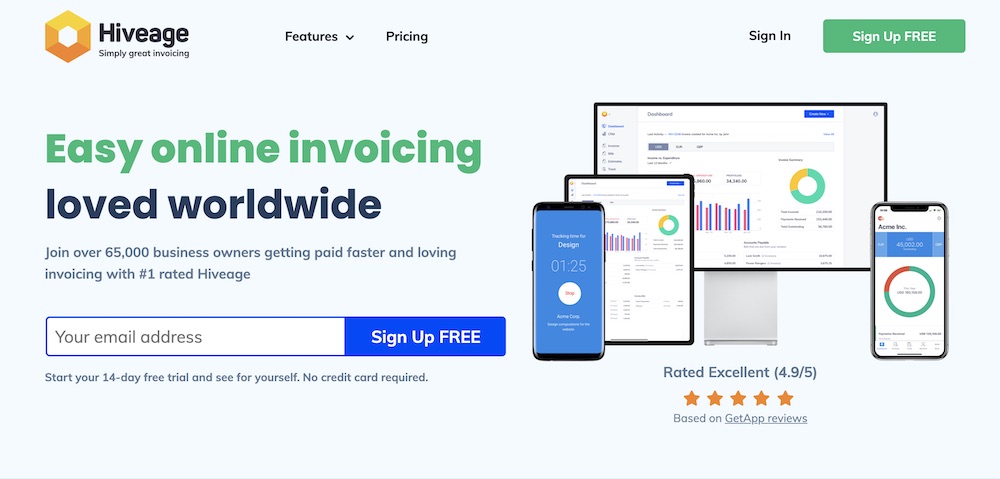
Free trials and demos are great ways to generate leads: they represent a strong buying signal. These are people who are already at the bottom of your funnel and are ready to buy. In exchange for the demo or trial, you ask for their contact details, making them a warm lead.
9 - Offer useful checklists
Relevant checklists are also a good way to generate leads. People are constantly looking for easy step-by-step plans and tools to make their life easier. You can capitalize on this with checklists.
A good checklist is action-oriented, does not contain too much text and is focused on one goal. Think of a topic that is relevant to your industry, and pour that topic into a number of steps that makes sense.
A few examples:
- What legal information should your website contain?
- What do you pack on a survival trip?
- What does a successful advertising campaign consist of?
- Etc…
Once you have a relevant subject and have thought up the questions, put that in a nice PDF. You don’t need spectacular graphics here: just make sure you have an orderly layout with some colour for support, add your logo and you’re done. Users may want to print your checklist, so make sure that this is possible. We like to share this checklist for inbound marketing campaigns as an example.
10 - Create compelling podcasts
What do you do on the train, in a traffic jam on the way to work, on a plane or when you’re working out? You listen to music.
Or, as more and more people are doing, you can listen to podcasts. Let’s face it: what better way to spend your time in a traffic jam than by trying to fill it with useful podcasts that will help you impress your colleagues at the water cooler?
All you need to do is talk about your core business. Recycle one of your most popular blog posts and talk about it for half an hour, or record an interview with a specialist from your industry. Whatever you do, make sure your audience really get something out of it and it’s not a waste of time.
If you want to start a podcast, make sure you use a good microphone and to record in a quiet environment. Nothing is more annoying for a podcast than environmental noise that makes it hard for your listeners to understand you. You can host your podcasts for free on Buzzsprout, or you can use Spotify.
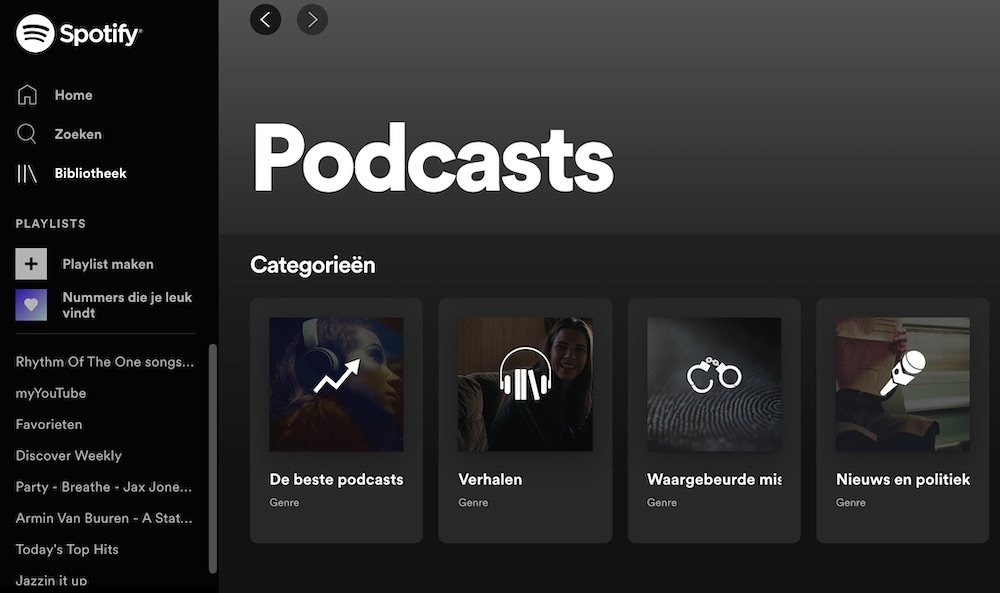
11 - Publish case studies
Whatever products or services you sell, it is important to gain the trust of your target audience. A good way to do that is to show how you have helped others with similar challenges. Especially if you let those people speak for themselves. People just love success stories.
Your target audience is looking for solutions and if you can give them examples of existing customers they can identify with, you have content that really adds value. People are happy to give you their details, provided you can really help them solve a problem.
Interview one or more customers, and write that down in a document. Use quotes (you can also publish these separately as testimonials) and prove your point with facts and figures. Spice up your file with images, and make sure your case study is geared towards your target audience.
Are you looking for templates for your case studies, or are you looking for examples, then check out Xtensio.
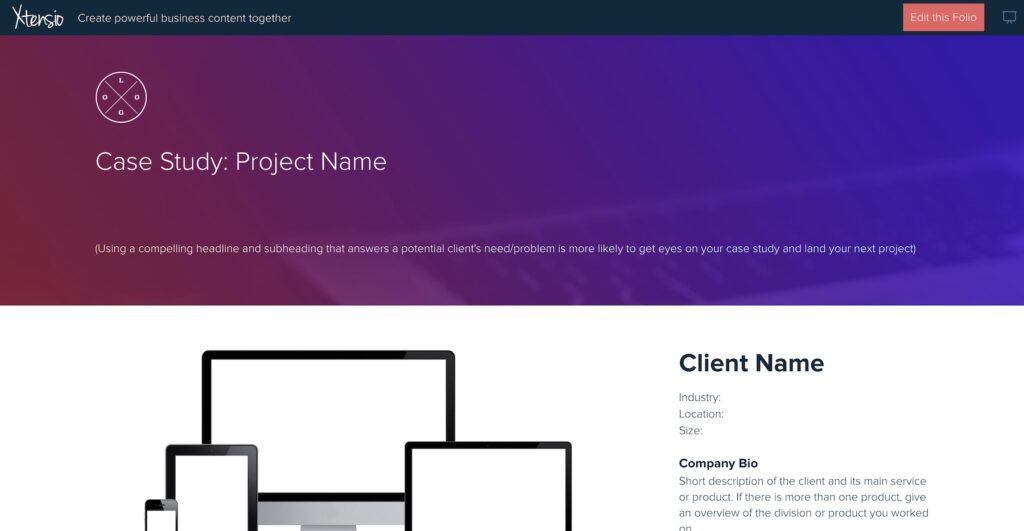
12 - Host a webinar
Make sure you have a topic that you have mastered and that you can talk about for at least half an hour. Perhaps you have already held keynotes or done internal presentations in your company. You can also use this content in a webinar, with a few adjustments here and there. So dust off those powerpoint presentations and update the content for your webinar.
If you don’t want to do this all by yourself, look for a partner with whom you can discuss a common topic. An extra advantage is that you can then address the target audience of both companies and reach more people.
When you are ready to host your first webinar, you need a webinar tool. Be sure to check out Zoom, GoToWebinar or for example Bluejeans to hold your webinars. When making your choice, also look at what you want to do during a webinar, like recording your session or launch polls. And you may also want to do a dry run before you do the actual webinar, especially if this is all new to you.
There you go: these lead generation ideas will keep you busy for quite a while. They have been tested, fine-tuned and retested by various companies around the world. Try out the tactics that work for your industry and your business. You can apply best practices from other companies and industries, but in the end you have to do what is best for you.
In any case: lead generation is not the end of the process. Afterwards, these leads also need to become paying customers. So pay attention to this as well and make sure you guide those leads through their decision-making process. We can warmly recommend Hubspot as a tool for this.
Best of luck with lead generation. Feel free to book half an hour with us for some lead generation inspiration, or to discuss a concrete marketing topic with us. We’re always happy to help.
Get more leads than ever
Download our whitepaper about how you can start generating more leads for your business.






